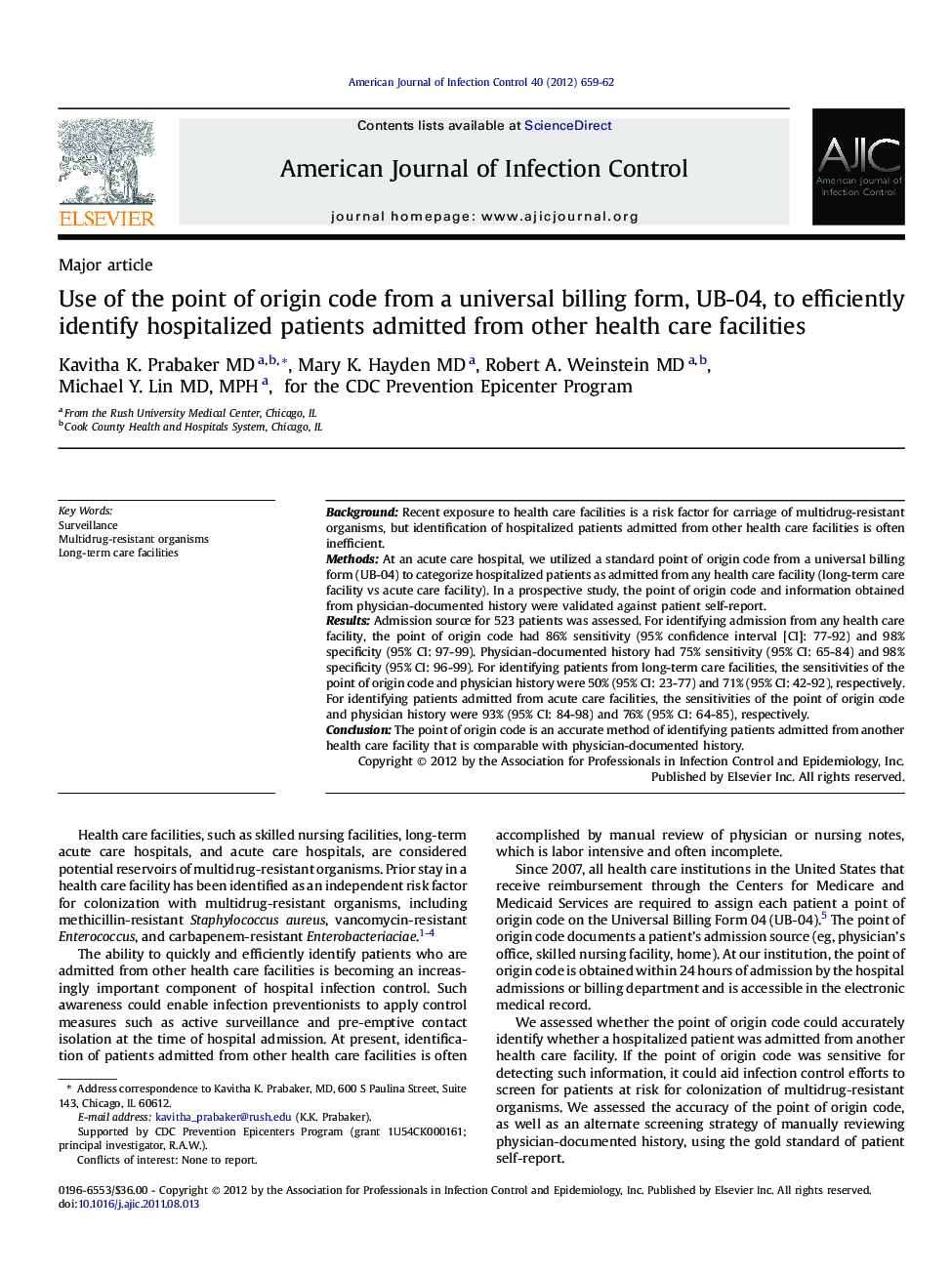| Article ID | Journal | Published Year | Pages | File Type |
|---|---|---|---|---|
| 2637845 | American Journal of Infection Control | 2012 | 4 Pages |
BackgroundRecent exposure to health care facilities is a risk factor for carriage of multidrug-resistant organisms, but identification of hospitalized patients admitted from other health care facilities is often inefficient.MethodsAt an acute care hospital, we utilized a standard point of origin code from a universal billing form (UB-04) to categorize hospitalized patients as admitted from any health care facility (long-term care facility vs acute care facility). In a prospective study, the point of origin code and information obtained from physician-documented history were validated against patient self-report.ResultsAdmission source for 523 patients was assessed. For identifying admission from any health care facility, the point of origin code had 86% sensitivity (95% confidence interval [CI]: 77-92) and 98% specificity (95% CI: 97-99). Physician-documented history had 75% sensitivity (95% CI: 65-84) and 98% specificity (95% CI: 96-99). For identifying patients from long-term care facilities, the sensitivities of the point of origin code and physician history were 50% (95% CI: 23-77) and 71% (95% CI: 42-92), respectively. For identifying patients admitted from acute care facilities, the sensitivities of the point of origin code and physician history were 93% (95% CI: 84-98) and 76% (95% CI: 64-85), respectively.ConclusionThe point of origin code is an accurate method of identifying patients admitted from another health care facility that is comparable with physician-documented history.
